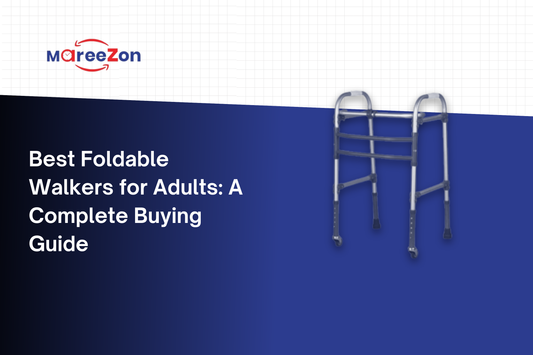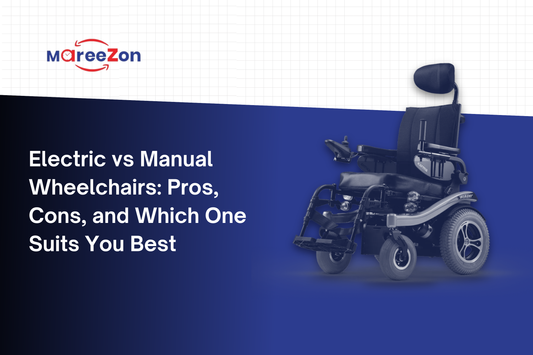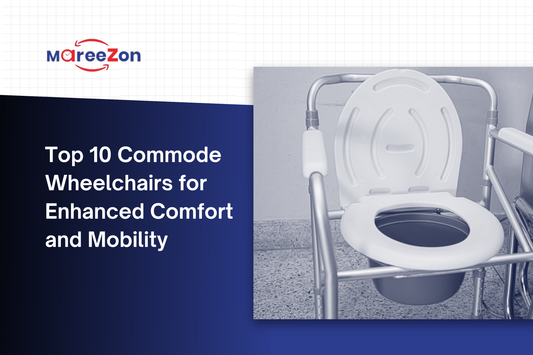Choosing the right wheelchair for a patient involves assessing their needs, measuring their body, and considering various wheelchair types and features. Whether you’re looking for a wheelchair for patients online or in a store, this step-by-step guide will help you make an informed decision:
1. Assess the Patient's Needs
- Mobility Level: Determine if the patient is independent or requires assistance. For those with reduced mobility, a self-propelled wheelchair or patient transfer wheelchair may be ideal.
- Physical Limitations: Evaluate any issues with balance, strength, or endurance.
- Primary Use: Identify the wheelchair’s purpose—indoor, outdoor, daily activities, or travel. For instance, foldable wheelchairs and lightweight folding wheelchairs are excellent for travel.
2. Measure the Patient
- Seat Width: Measure the widest part of the hips or thighs and add 1–2 inches for comfort.
- Seat Depth: Measure from the back of the knee to the back of the hip, subtracting 1–2 inches to avoid pressure sores.
- Seat Height: Measure from the heel to the back of the knee while seated to ensure proper foot support.
- Back Height: Measure from the seat surface to the top of the shoulder blade for adequate back support.
- Armrest Height: Measure from the seat surface to the bend in the elbow for comfortable arm positioning.
3. Consider the Type of Wheelchair
-
Manual Wheelchairs:
Best for patients with upper body strength to self-propel. Options include standard wheelchairs, luxury wheelchairs, and lightweight folding wheelchairs. -
Power Wheelchairs:
Suitable for patients with weak upper bodies or limited mobility. They can include specialized models like a wheelchair with commode or sports wheelchairs. -
Patient Transport Wheelchairs:
Lightweight and portable, these are ideal for short-term use or indoor mobility.
4. Assess Wheelchair Features
- Aluminum: Lightweight and rust-resistant.
- Steel: Durable but heavier.
- Titanium: Lightweight and strong, suitable for active users or specialized models like Karma wheelchair.
- Pneumatic (air-filled): Provides a smooth ride but requires regular maintenance.
- Solid Tires: Maintenance-free but less comfortable on uneven surfaces.
- Handbrakes: For manual control.
- Anti-tip Devices: Essential for power wheelchairs to enhance safety.
- Footrests: Fixed or swing-away for easy transfers.
- Armrests: Fixed or adjustable for comfort.
- Backrests: Reclining or adjustable to provide better support.
5. Consider Environmental Factors
- Indoor Use: Smaller wheels and tight turning radius for easy maneuvering.
- Outdoor Use: Larger wheels and rugged frames for uneven terrain.
-
Terrain:
Smooth surfaces require standard wheels. Rough terrain benefits from larger, rugged wheels and better suspension. Many models, including luxury options, are designed with these features to enhance comfort and usability.
6. Budget Considerations
- Compare Costs: Manual wheelchairs like foldable wheelchairs are generally more affordable than power wheelchairs.
- Insurance Coverage: Check if the cost of the wheelchair or its accessories is covered by insurance.
- Additional Features: Account for costs of add-ons like power controls, seat cushions, or specialized backrests.
7. Consult a Professional
- Medical Experts: Seek advice from a physical or occupational therapist for recommendations tailored to the patient’s condition.
- Try Before Purchase: Test different models, including pediatric wheelchairs and wheelchairs for kids, to ensure comfort, usability, and suitability for the patient’s needs.
By following these steps, you can choose a wheelchair that best suits the patient’s needs, whether it’s a commode model, a sports wheelchair, or an option available online, ensuring comfort and long-term usability.










